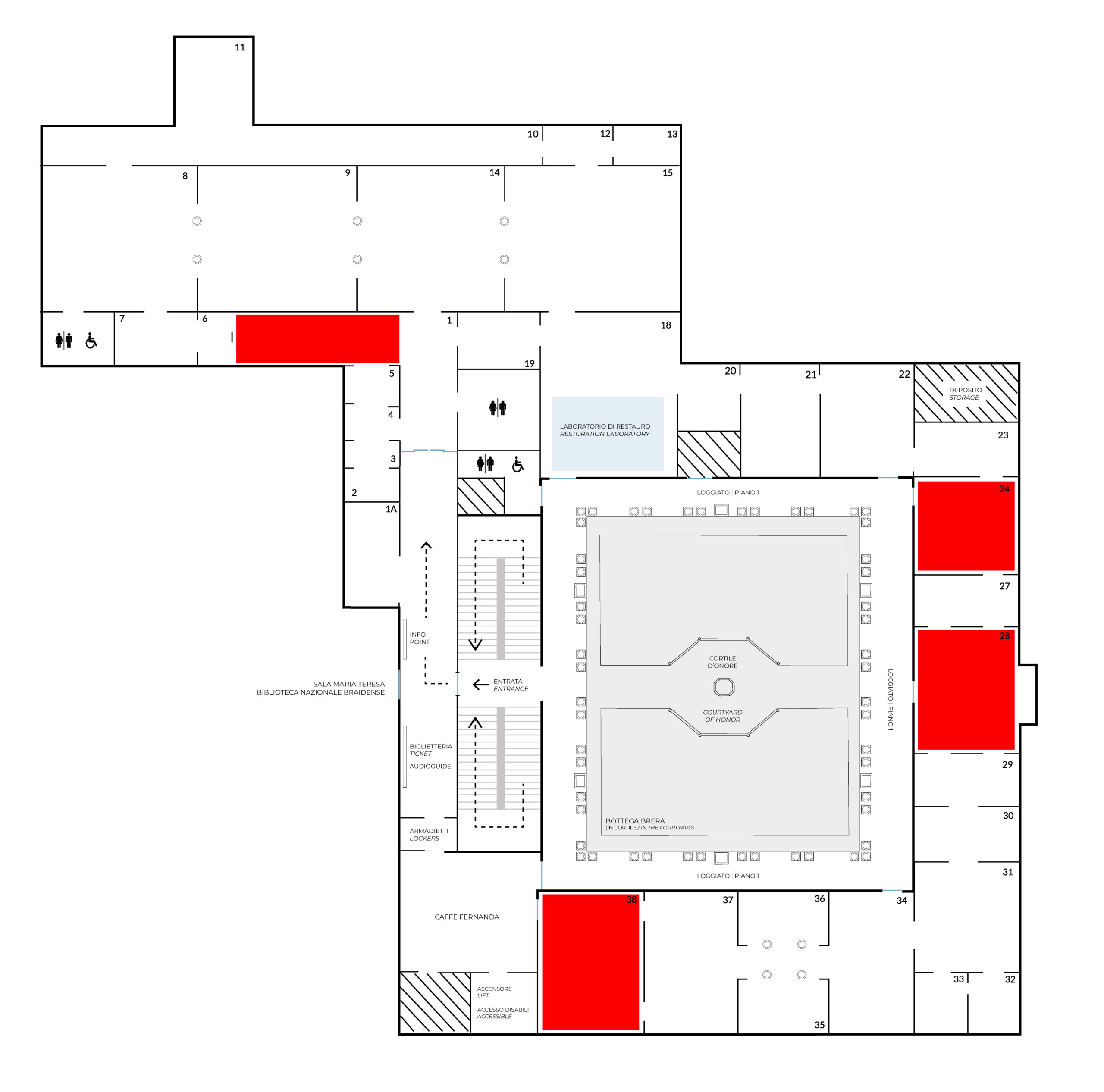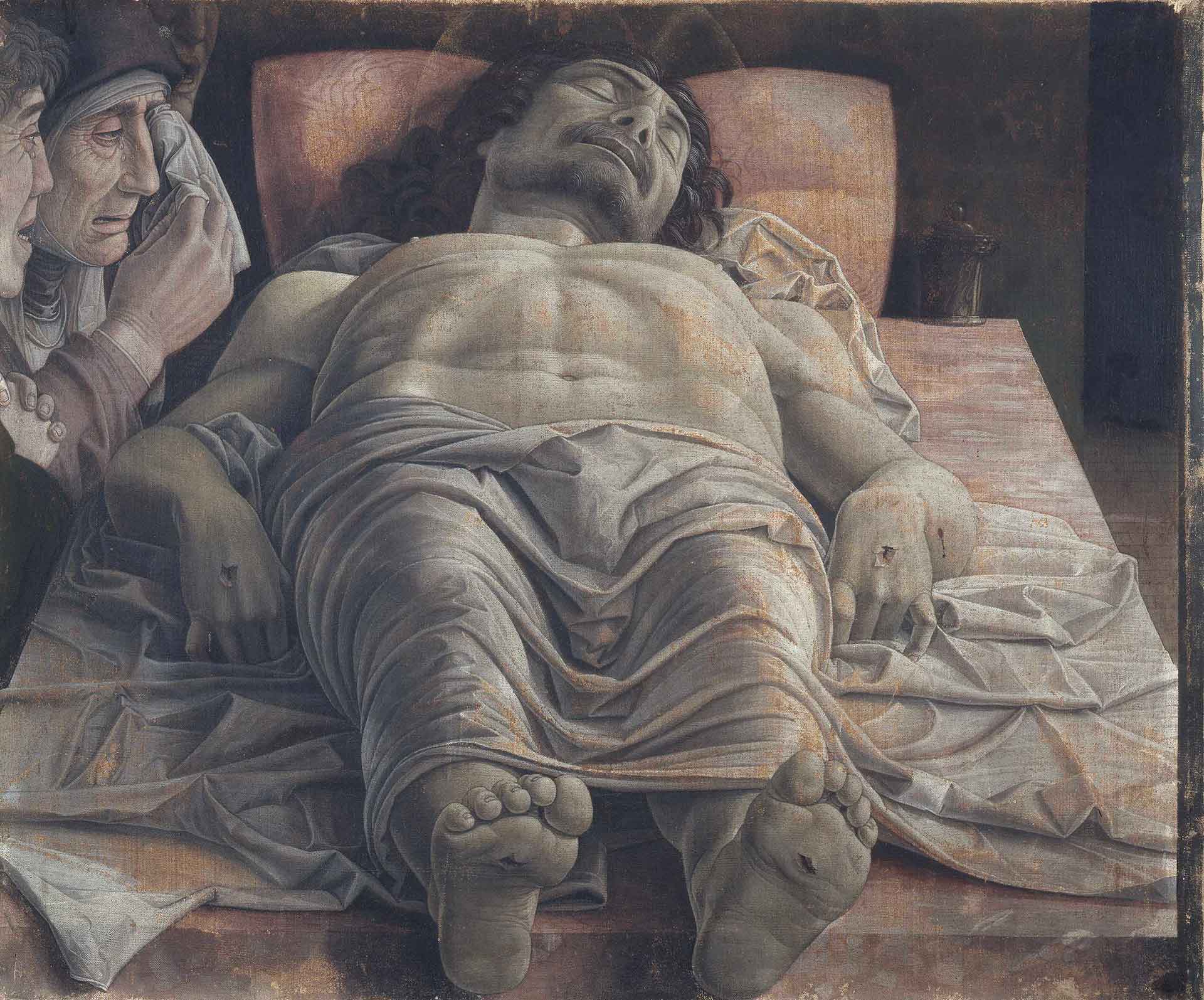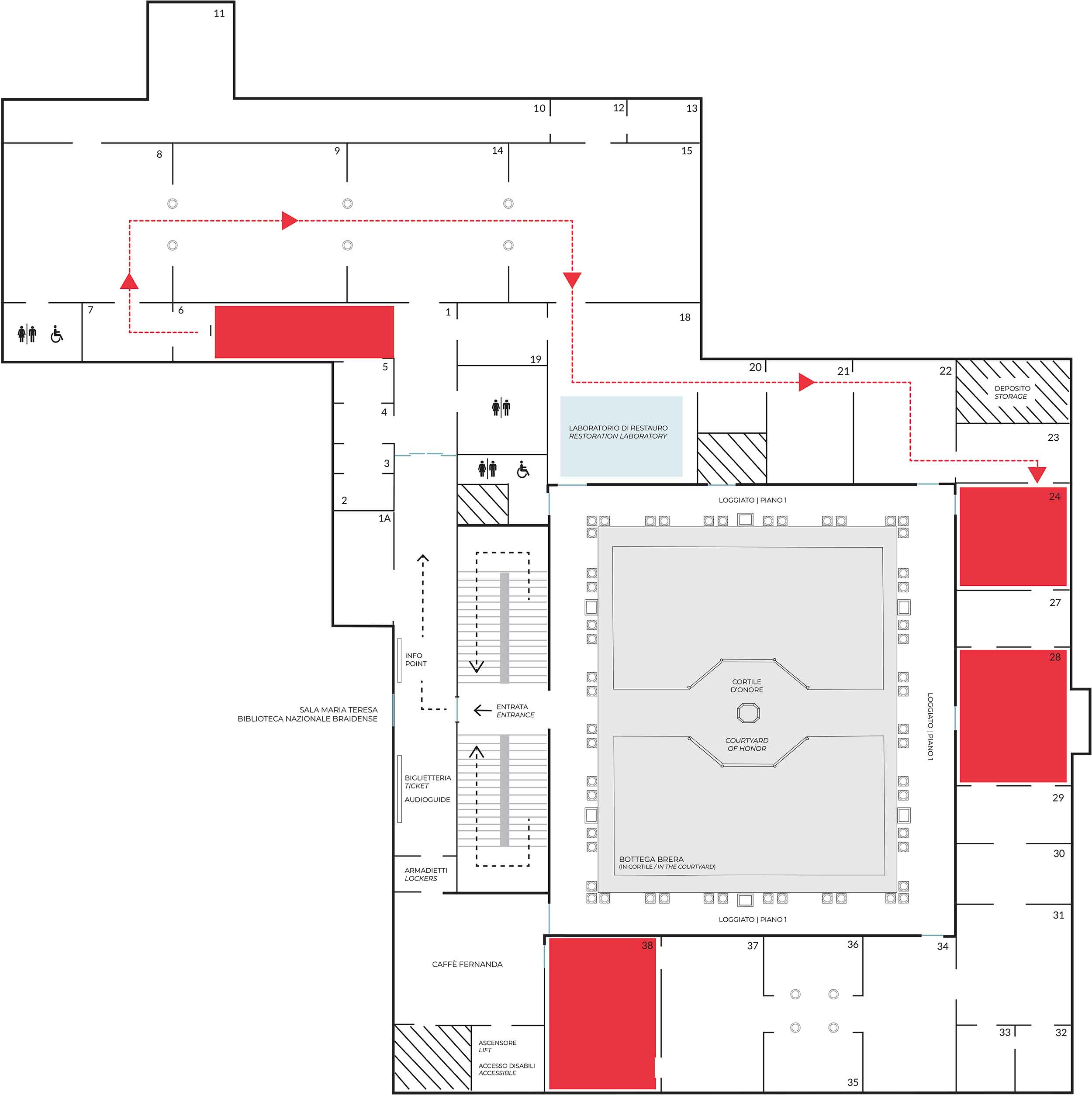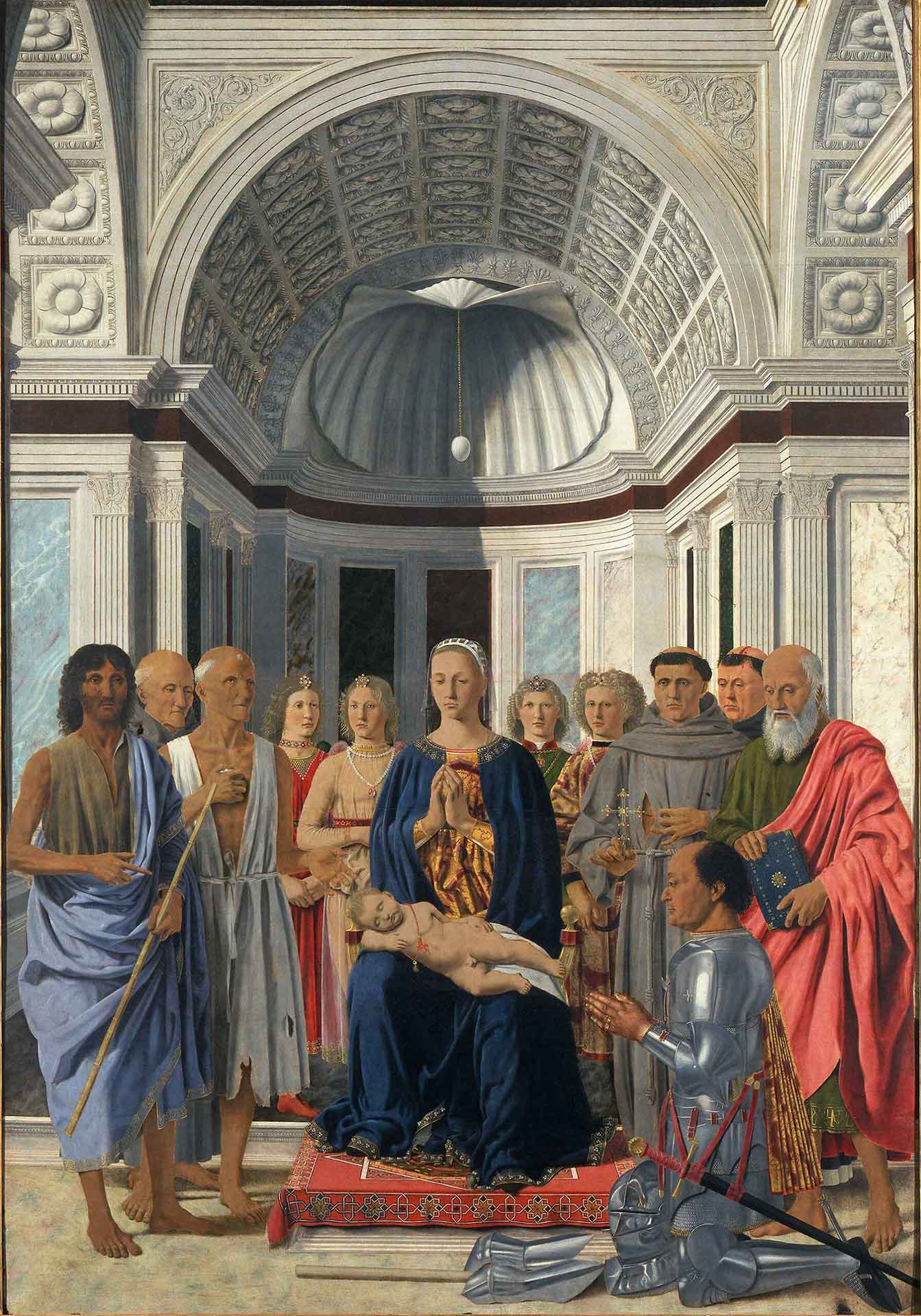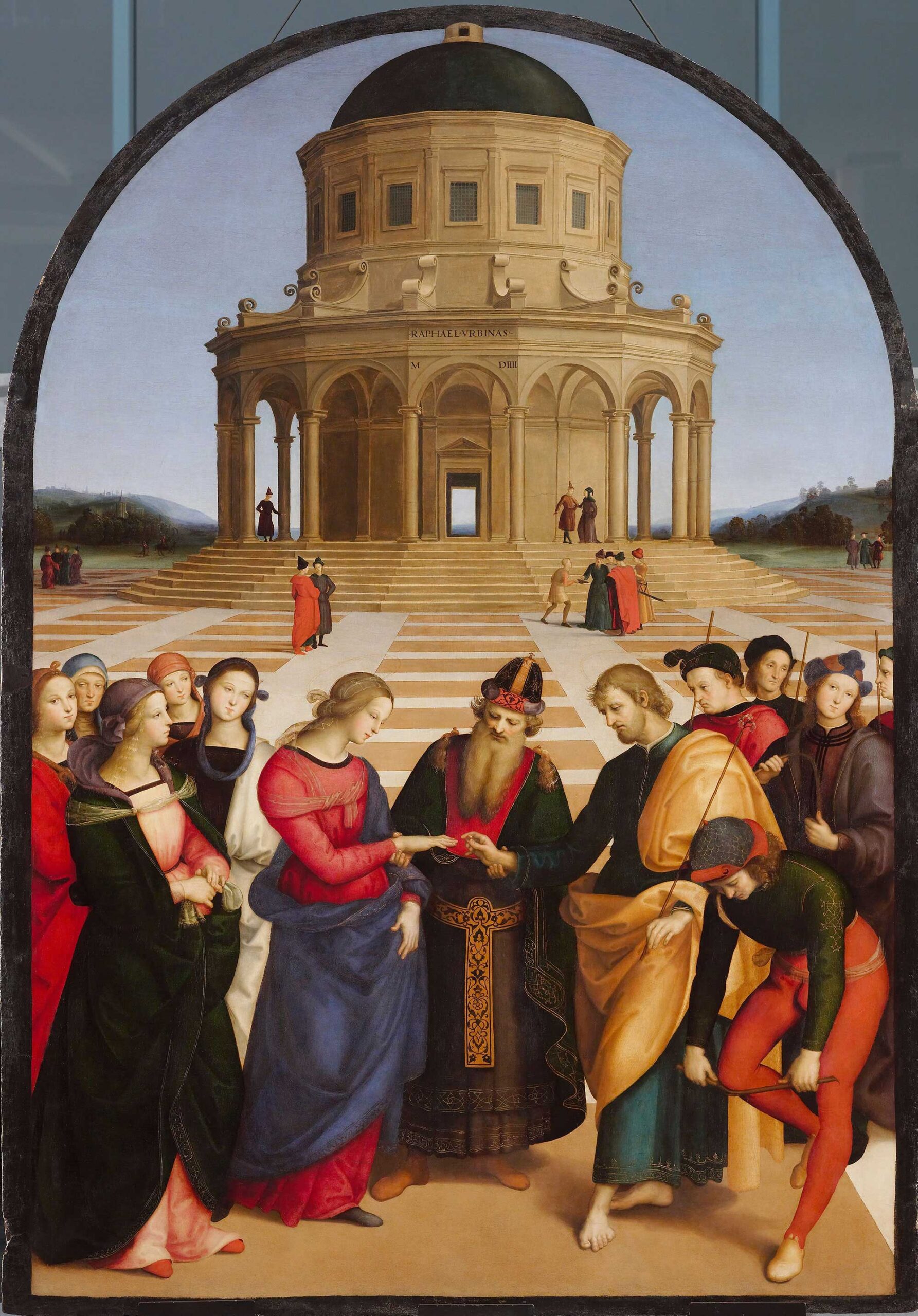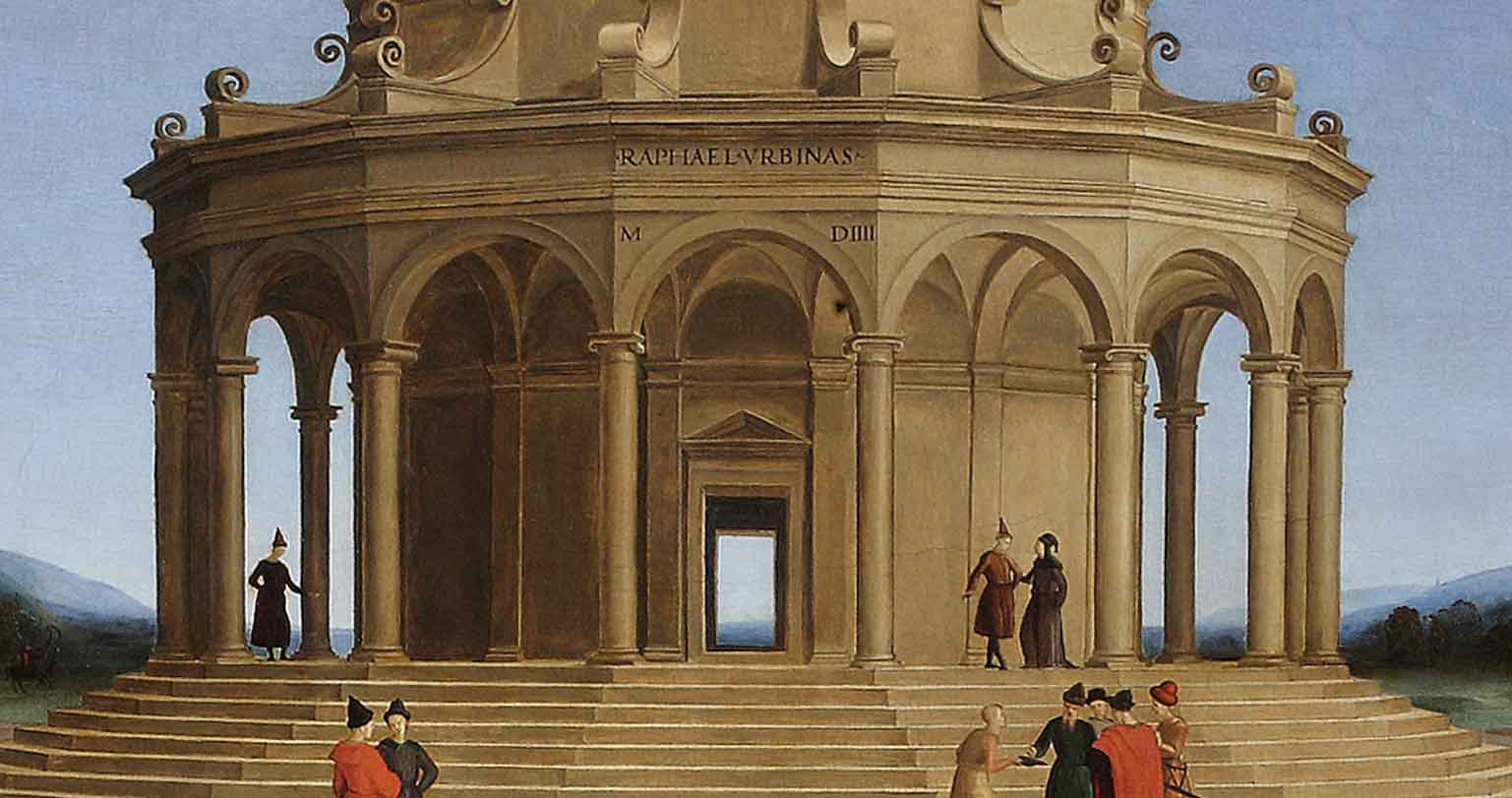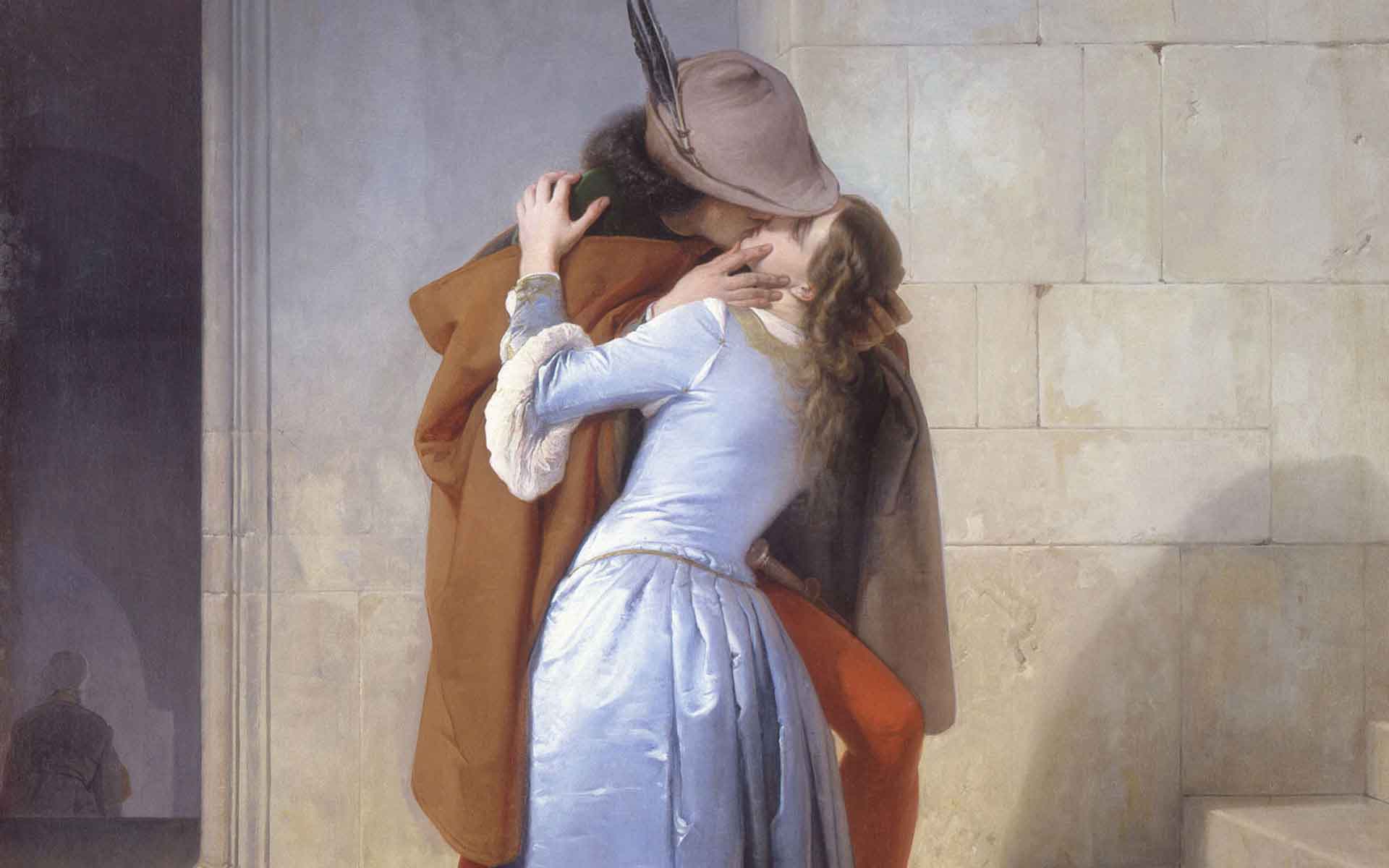The Madonna sits in the middle of an orderly group of saints and angels;
her eyes are low and her hands are joined while she is holding Jesus asleep on her lap. On his knees is the patron Federico da Montefeltro, Duke of Urbino. He wears armor with a cloak; the sword is tied to the belt, the knobs, the stick and the helmet are resting on the ground. The last-named object bears the trace of the blow suffered during a tournament that had made him one-eyed, forcing him to be portrayed in profile. The characters are in a classical church with walls decorated with polychrome marble slabs. The barrel vault that covers the apse is punctuated by ceiling coffers, which give depth to the space, and it is decorated with a large shell from which hangs an egg attached to a small chain.
The work arrived in Brera in 1811 from the Church of San Bernardino, just outside Urbino.
The date of the painting’s creation is still uncertain. One of the hypotheses is that Piero painted it around 1472, the year in which the ducal heir Guidobaldo was born, but Federico’s wife Battista Sforza died. In that same year Federico, an educated man who earned his wealth as a captain of fortune, conquered Volterra on behalf of Florence. Some elements in the canvas would confirm this reading: the Duke’s armor, worn as if to celebrate the recent victory; the choice to include John the Baptist, the first saint on the left, to commemorate his late wife Battista, who is absent in the painting; the shell and egg, symbols of birth, would be placed to greet the arrival of Guidobaldo.
To the meanings linked to the life of the Montefeltro family, devotional ones are added: the sleep of Jesus and his necklace of blood red coral refer to the Passion; the shell and the egg instead remind viewers that Jesus will be reborn on the day of Resurrection. The egg, a model of geometric perfection, is the symbolic center of the painting. It seems suspended above the head of the Madonna but, if you look more carefully, you will notice that the figures are in fact in front of and not inside the apse. The egg is therefore far away, and of considerable size: it is an ostrich egg.
According to a medieval belief, the ostrich abandons her egg in the desert, where the sun fertilizes and broods over it; its presence in the painting could allude to the Virgin, who became a mother thanks to the Holy Spirit.
The particular ability of Piero to compose such solemn and convincing spaces comes from his study of mathematics and perspective. His passion for the mathematical sciences, together with his interest in the effects of light on objects, are the hallmarks of his style.
In the painting, the light comes from a source we see reflected on the shoulder of Federico’s armor, an arched window, and perhaps a small oculus. Referring to the Flemish art known at the court of Urbino, Piero captures the sheen of the diadems of the angels; he renders the transparency of the angel’s robe to the left of the Virgin and the crystalline cross of Saint Francis, who opens his tunic to show the wound in his chest.
The silent figures with quiet gestures, who inhabit a space immersed in a suspended time, make this work not only a masterpiece of Renaissance culture, but an eternal mystery of beauty.

